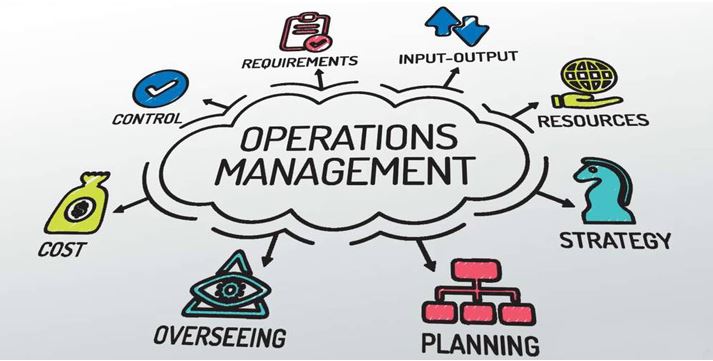Huawei Operations Management Concepts and Practices and their Application in Real Business
Huawei – Operations management has been expanding to a broader notion of service and production management hence signifying the principalities of operations management concept in the transformation of raw materials to finished good ready for delivery to the consumer. The increasing recognisability and importance of operations management in organisations have led to growth and exploration of techniques and concepts fundamental in production and service delivery. Therefore, the effectiveness and efficiency of operations and service delivery in organizations are determined by how well they apply operations management concepts and practices in their endeavor.
Operations management scope ranges across various enterprises where people are involved in production and service delivery activities such as product and service design, technology selection and management, system design, process selection, quality improvement etc. (Kunchala). These concepts and functions entail many interrelated activities including scheduling, quality assurance, inventory management, capacity planning etc. fashioned toward effective and efficient production and delivery of goods and services.
Huawei Technologies Corporation, being among the leaders in the production and sale of mobile devices, they need to maintain a high-end operations management through the application of the latest and best operations concept in operations management. Besides, various factors necessitate the organization to facilitate streamline operations management. These factors include the quantity and quality of production, market diversity, change in technologies, competition, and the ecosystem.
Huawei, for instance, is inculcating the user-centric operation initiative which is aimed at digitizing their product while improving quality and user experience. This, therefore, entails the use of market research in their quest to deliver quality products which are user-friendly and well-paced with trend and technology (Huawei). Since the organisation uses make to deliver production approach, their market research should involve an in-depth analysis of the consumer preference and inculcate them during the planning, design, and production of various products.
The organization applies a generic and multistep product development process where they are technologies pushed product and platform products. For instance, the production of the Huawei GR5 product was a platform product as it was built around the pre-existing technology subsystem of the Huawei GR3. Besides, the Huawei Y series is built along a product platform where they use already pre-existing technology. Due to the overly increasing enormity and complexities due to technologies advancement, Huawei, therefore, enhances management transformation as they resort to a lean operation to accommodate customer requirement to improve production efficiency while controlling costs.
To cope with the competition and rapidly changing technologies, the organization applies the quick-build products which entail the rapid modelling and prototyping. To achieve a seamless and quality production, the organization integrates the operations and management organisation with the resources, platforms, and expertise through centralized processes. (Mingwei, Yaling & Feixiang) This highlights the importance of the effective layout decision within the organization.
Facility layout is essential in the realization of a seamless and lean production process in the Huawei Corporation. This entails determining of the arrangement and placement of workgroups, workstation, departments, inventory etc. to reduce possibilities of waste such as motion, movement, inventory, and quality accruing. It is worth noting that Huawei implements a Quality First strategy as they seek to enhance sustainability in materials and suppliers through performance appraisal.
As a contract manufacturer, Huawei has a high-end procurement decision-making team aimed at strengthening customer and supplier’s sustainability. For instance, the organisation has posited a procurement quota to enhance supplier sustainability hence minimizing the risks in supply while facilitating customer satisfaction hence boosting supply chain a competitive advantage. The organizations evaluate supplier eligibility based on compliance with the established supplier Huawei Supplier Sustainability Agreement, laws and regulations.
Further, the procurement process in Huawei is value oriented which entails adhering to the supplier’s regulations, transparency, and scientific procurement which is aimed at building a seamless and healthy s(secure, reliable, and competitive) supply chain. Besides, to facilitate the procurement process, Huawei facilitates a joint innovative, strategic cooperation with a win-win and benefit sharing process. This is achieved by enabling and encouraging mainstream partners to engage in the initial stages of product research and development to assure supply and competitiveness during the process (Tao).

Being a contract manufacturer, the organization needs to outsource various parts and or services and maintain robust industrial relations to enhance operational efficiency and effectiveness. This is critical as it enhances reasonable profit distribution within the industry thus ensuring key partners and suppliers gain sizeable and reasonable profits hence enhancing a success shared, competitive, and sustainable supply chain. A comment by Huawei’s Consumer Business Group chief, Yu Chengdong, “We are laying out plans for all our key smartphone parts. Huawei might not manufacture these components directly, but it does not mean we do not own technology to manufacture them ourselves” indicates the commitment and appreciation by Huawei to outsource their non-core competencies and dwell on competency for efficiency and effectiveness in their operation after the flash memory incident (Tao).
Additionally, while the organization seeks to facilitate lean manufacturing which is eco-friendly and sustainable, the organization should conduct regular value analysis and sensitivity analysis. These analyses are essential as they enhance the better performance while adhering to customers’ requirement. Lastly, Huawei has prioritized quality as the quality control department is fashioned to make the products synonymous with high quality. The objective is Huawei to win on quality through provision of high quality services and products consistent with their requirements.
MI global started operating in an already competitive market across China and the world. Various challenges culminated which had led to the organization to fall to a ‘unicorns’. Initially, the organization faced a slump supply chain associated with the rapid organizational growth which made the organization to retreat from overseas markets. Additionally, Mi had several organizational challenges that critically influenced their operations hence overall performance.
The organization has facilitated their design and manufacturing process through the application of an innovative business model which differentiate itself from other manufacturers at every phase of the customer journey. First, the organization has facilitated the production and development process of their products as depicted by their CEO, Lei Jun as “Mission Impossible.” Their manufacturing process is unique as they do not have a single physical factory as compared to Huawei which indicates a radical shift from the traditional approach in inventory management. This is vital toward the achievement of lean manufacturing as wastes are reduced in the production process. Xiamo’s make to stock production process inculcates customer requirement as depicted by the research and development process (Wang). The organization adopts a different strategy to reach client which entail cloud sourcing and application of social community to create awareness while at the same time gather information from the customers.
Different organizations have varying strategies and operations in their manufacturing and distribution. In comparison with MI, both organizations applied quick bound product development process where sample and prototypes are designed which includes the mix of the shape and the identity of the line design while depended on the outsourcing various components. Therefore, Huawei and Mi can be described as contract manufacturers.
Mi started operating in an already volatile and competitive market which necessitated differentiation. First, the organization MI Global prompted to restructure their operations through the adoption of more seamless and effective operation management practices. For instance, they restructured their smartphone hardware, supply chain, quality management as well as Research and Development initiative. Besides, the marketing of the end product and delivery to the consumer was exclusively online which made it inaccessible to many less tech-savvy clients (Kline). The organization had to implement therefore a unique and multistep production system which was more platforms based to facilitate production and supply. After their fall, the organization has become one of the super houses in tech in China competing with Huawei. In contrast, Huawei’s also invested greatly in research and development but they had a different marketing strategy which was both through outlets and online platforms.
Besides, the production design and development entail outsourcing of various components including processors, casing, or camera from other organization for profound and seamless manufacturing. This process culminates with detailed quality tests which are critical in value and sensitivity analysis. Each phase of product development is closely monitored, and any mishap is remedied accordingly before mass production and supply of the product to the final consumer.
Additionally, Xiamo has been a market leader in terms of competitive prices on high quality products. This has been enhanced by sustainable and value-based procurement of components facilitated by quality controls and value analysis. For instance, the Mi3 has a Sony Camera with a sharp LG display and Phillips flash. The organization, however, is purposed toward zero inventories as they only manufacture based on orders hence inventory holding cost is automatically reduced. They procure components only when they get orders (Ghong). This has enhanced the effective alignment of their business model and operations hence meteoric rise.
Huawei Strengths
Huawei had various strengths as compared to Mi in terms of and manufacturing and distribution. For instances, their approach on stock-to-order was favourable in term of logistic and inventory management. Mi implemented a zero inventory management practice where they solely depended on customer orders to procure components. Although this method can save a lot of inventory cost, it can be constraint in case of inventory shortage or delays in delivery. In addition, Huawei had a clear procurement and tendering scheme which facilitated the selection of supplier hence facilitated suppliers’ involvement in the manufacturing process.
Adoption and implementation of seamless and profound operation management concept in the production and delivery of goods and services is a blueprint to the organizational success. They main operations management principles and knowledge adopted by the company included; the principle of reality where Huawei didn’t focus only on lean management or total quality management but rather focused on tools and time-based approaches to provide nearly universal successful operations management.
Besides, the principle of organization is clearly highlighted in the case study. Both organizations had organized their production process coherently as manufacturing, marketing, and distribution are interconnected set of processes. Other principles addresses in the study were the principal of variance, change hence the manufacturing and distribution must be bound with struggles with regulations, benefits, and wages to facilitate competitive advantage. Besides, the concept of lean manufacturing and inventory management are greatly highlighted in the Huawei and Mi manufacturing process. Additionally, the quality assurance and research and development are critically addressed. For instance, these principles enhance the process of procurement through manufacturing to delivery of the final product to the customers.
First, the organization is able to achieve or move toward lean production hence facilitating reduction of wastes which in return results in the eco-friendly operation and competitive advantage in the market (Onwuka, Ugwu & Ndife). For example, Xiamo was able to cut the cost of its products through inventory management and quality control initiatives. Reduced inventory costs and effective supply chain strategy enhances more competent, faster, and accessible products (Francis). To sum-up, adoption of operation management concepts and practices will enhance organizational efficiency, effectiveness, quality, lead time, capacity utilization, and cost objectives through value creation and value addition when transforming inputs to outputs.
Works Cited
Feixiang, Mao et al. “Making Manufacturing Productive Again With Iot – Huawei Publications” Huawei, 2018.
Francis, Abey. “Operations Management – Definition, Objectives and Functions”. MBA Knowledge Base, 2018.
Ghong. “Xiaomi: China’S Threat To Apple And Samsung – Technology And Operations Management”. Rctom.Hbs.Org, 2015.
Kline, David. “Behind The Fall And Rise Of China’s Xiaomi”. WIRED, 2017.
Onwuka, Ebele Mary et al. “Evaluation of Operations Management and Its Impact on Improved Logistics Control”. International Journal Of Economics, Commerce And Management, III, no. 5, 2015, pp. 591-602.
Tao, Li. “Huawei To Improve Supply Of All Key Smartphone Components”. South China Morning Post, 2018.
Wang, Lucy. “Xiaomi – Mobile Disruptor from China – Technology And Operations Management”. Rctom.Hbs.Org, 2018.
Relevant Blog Posts
MBA Dissertation Topics | Business Management Dissertations | MBA Projects
MBA Operations Management
Implications of Servitization in Operations Management



